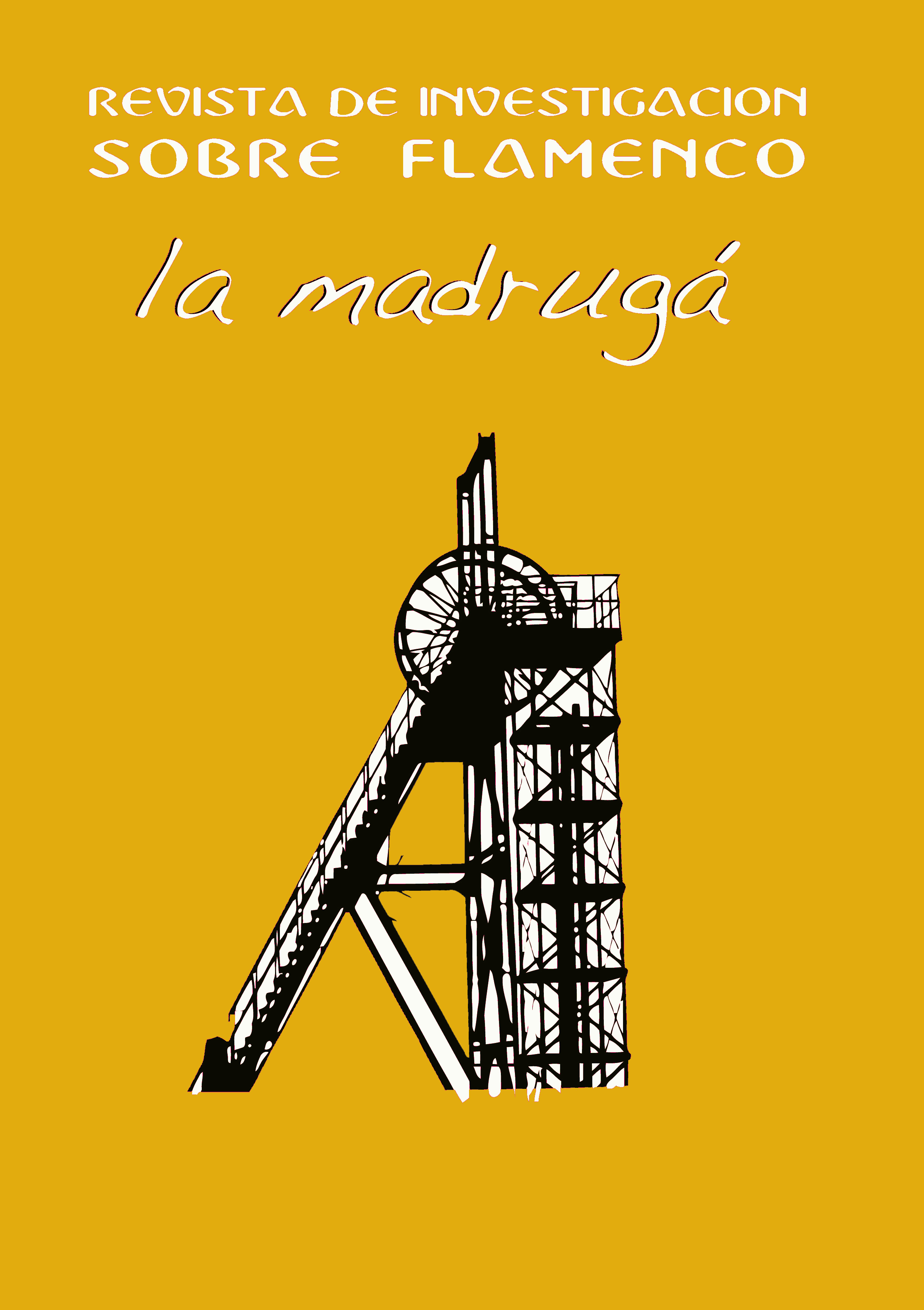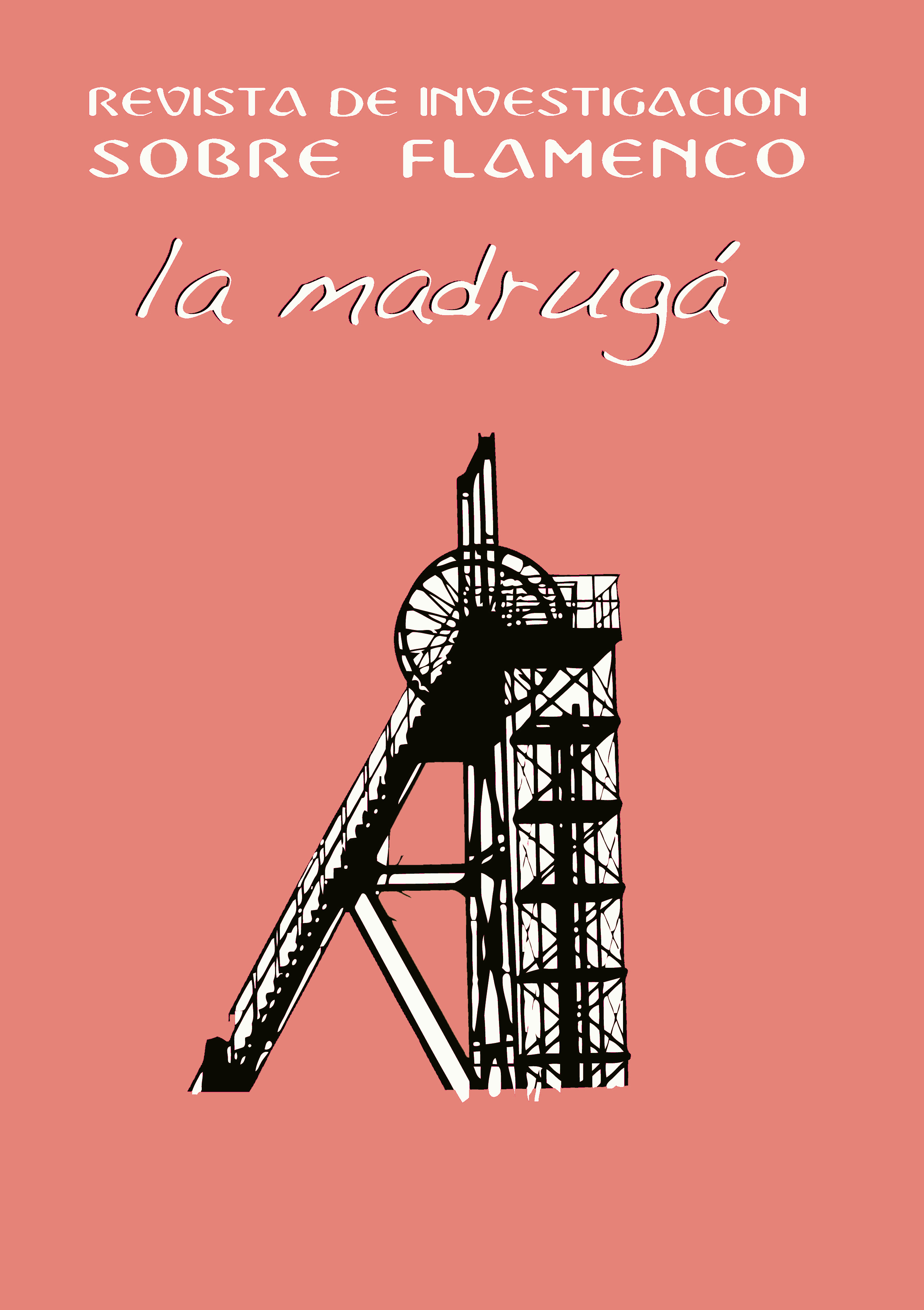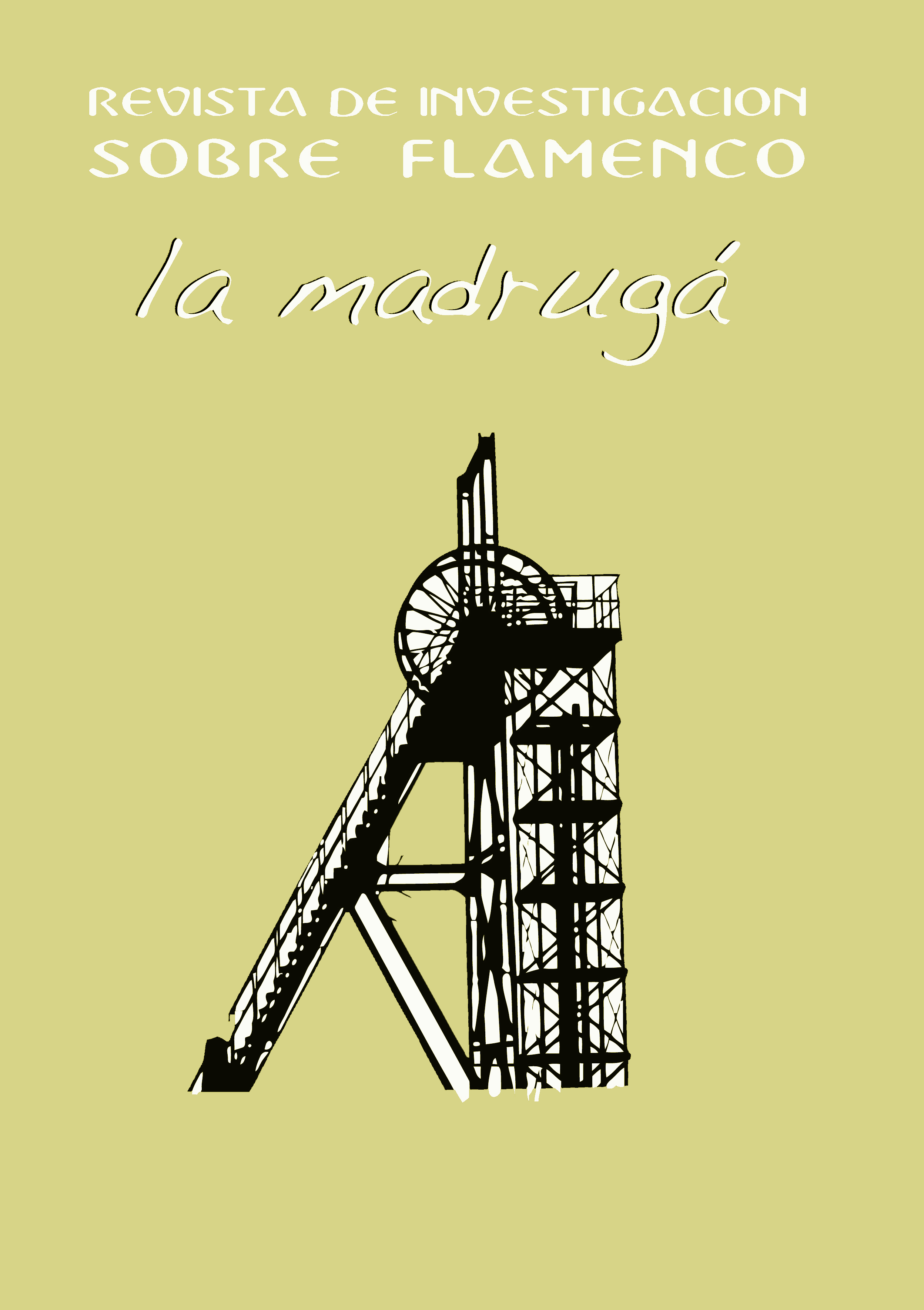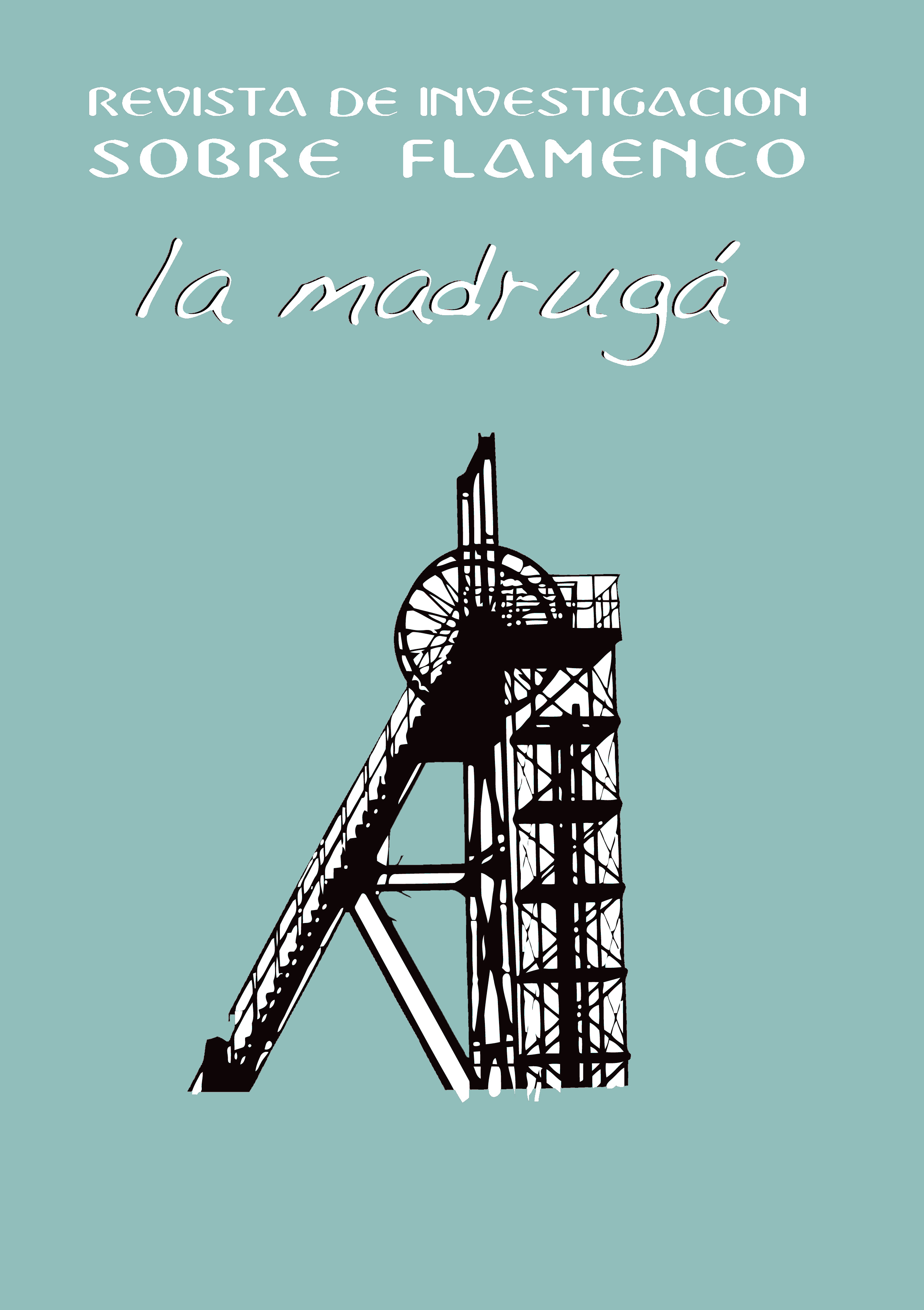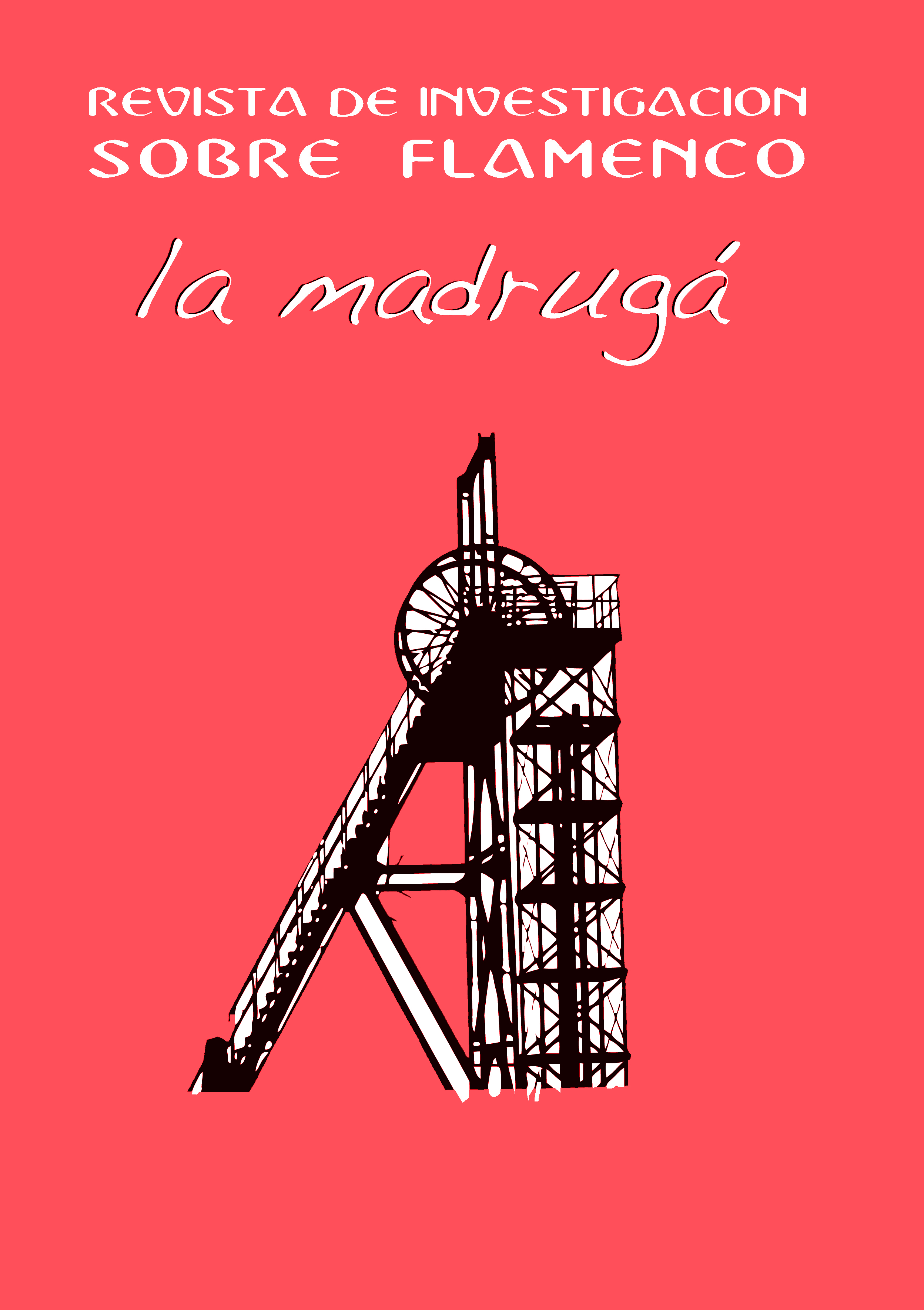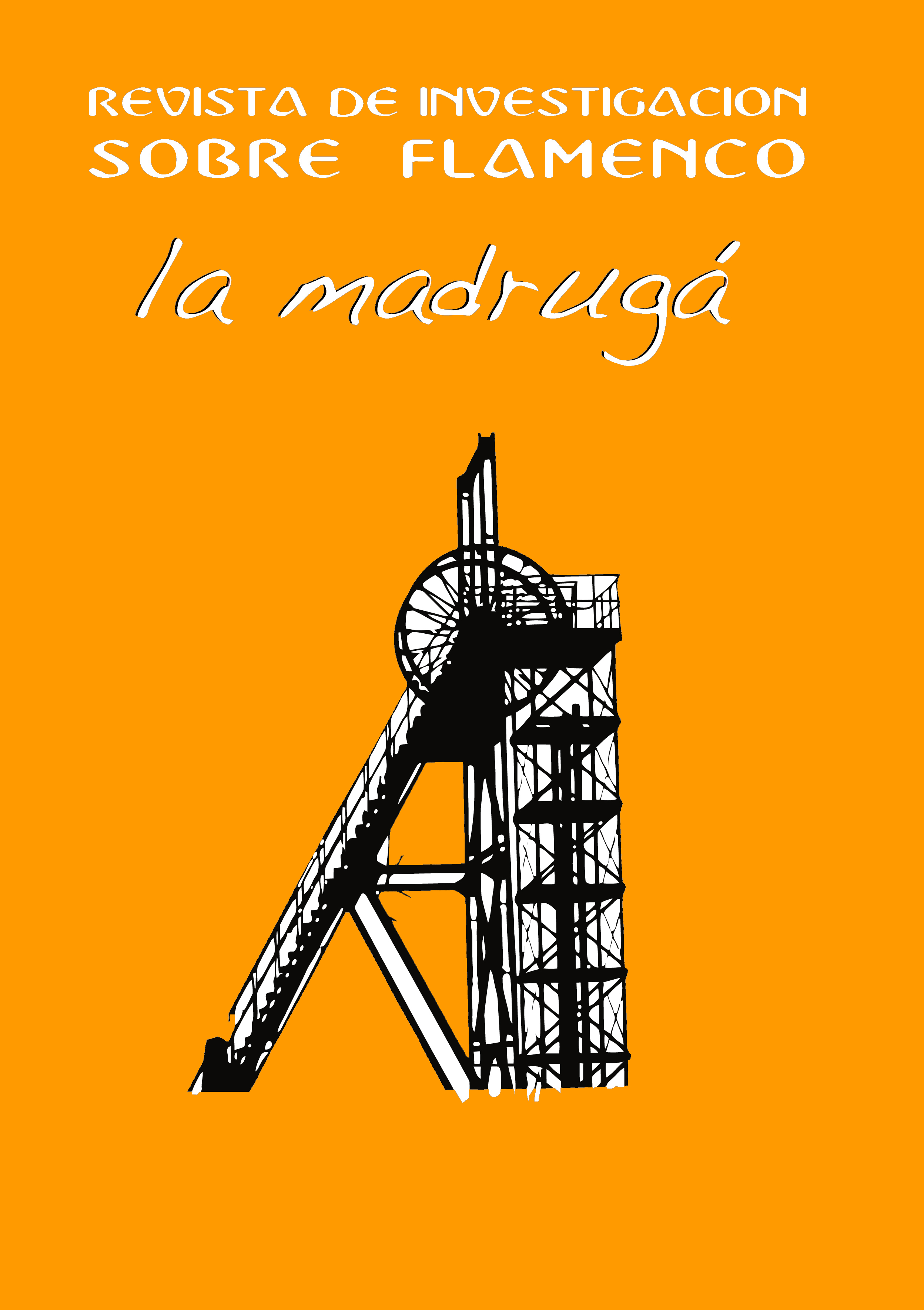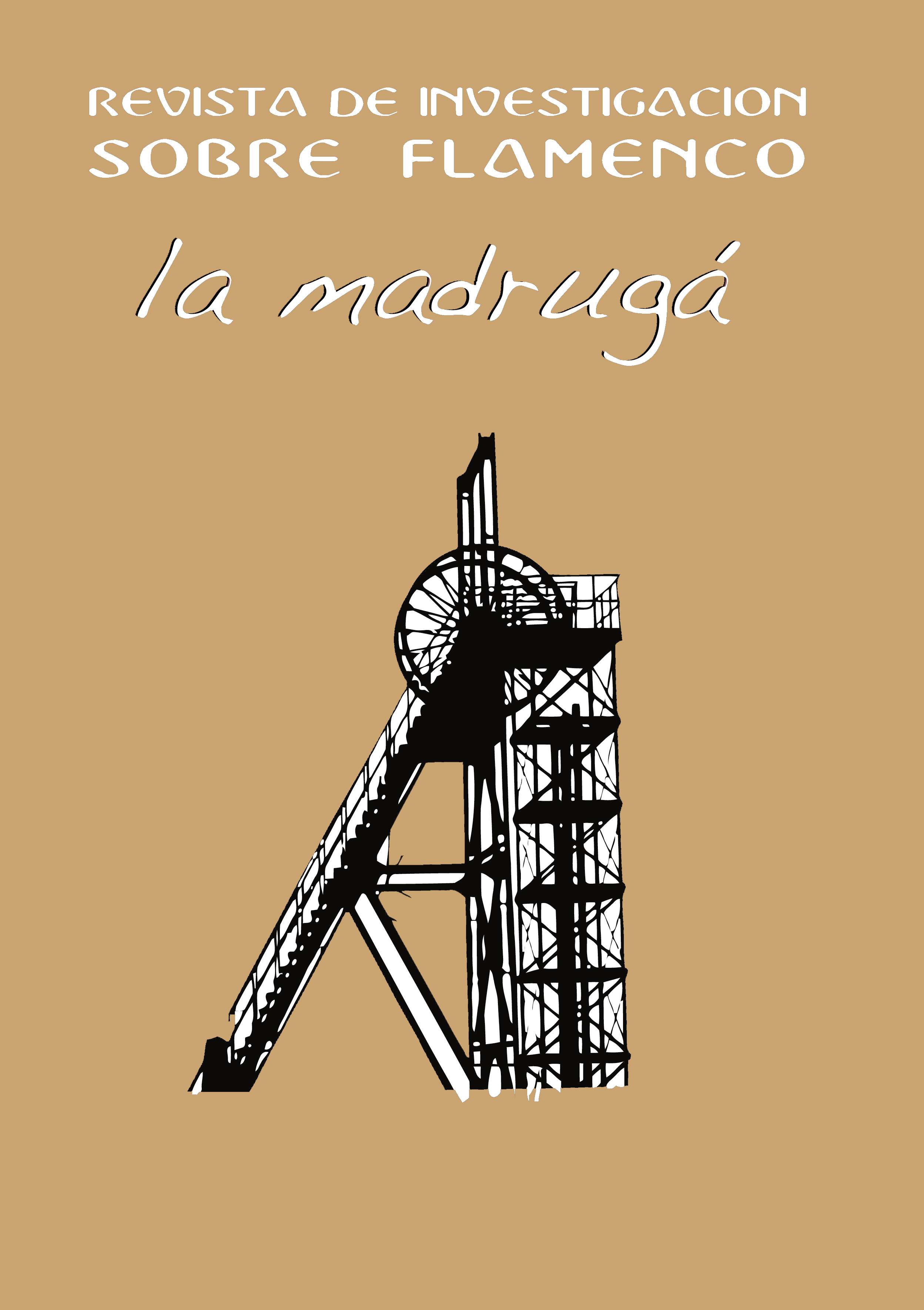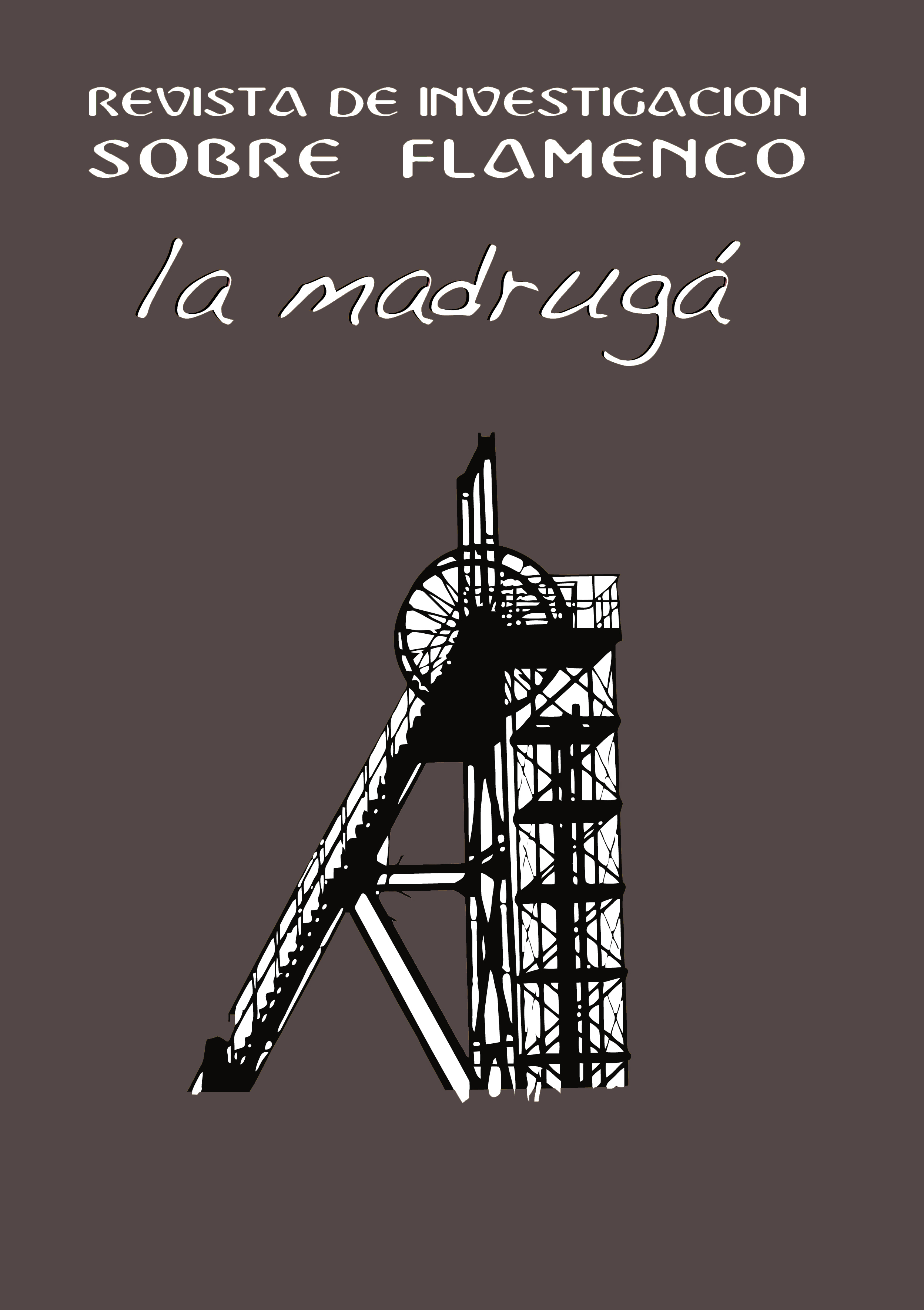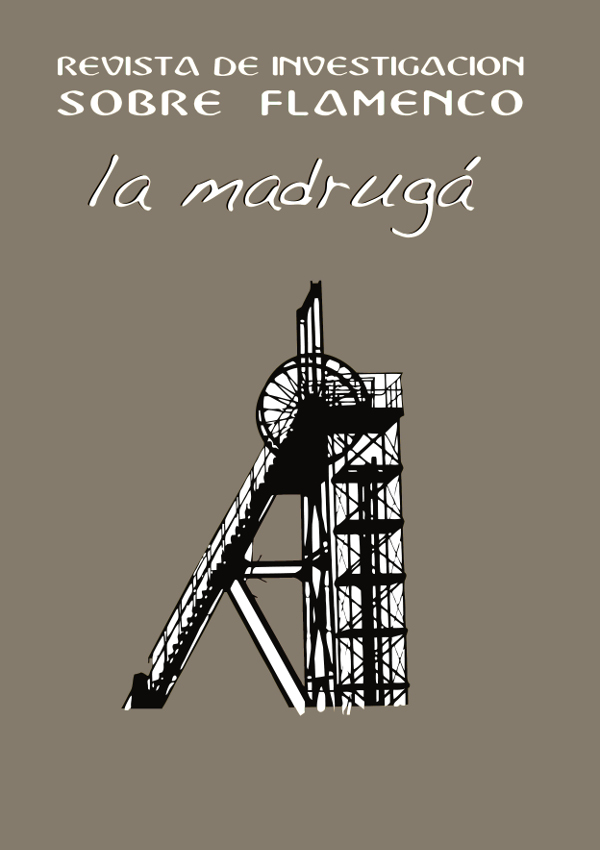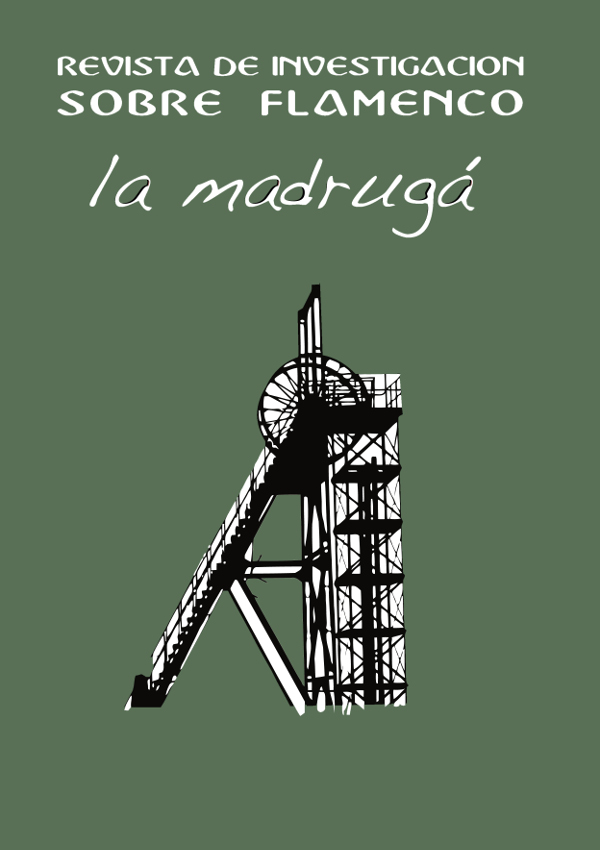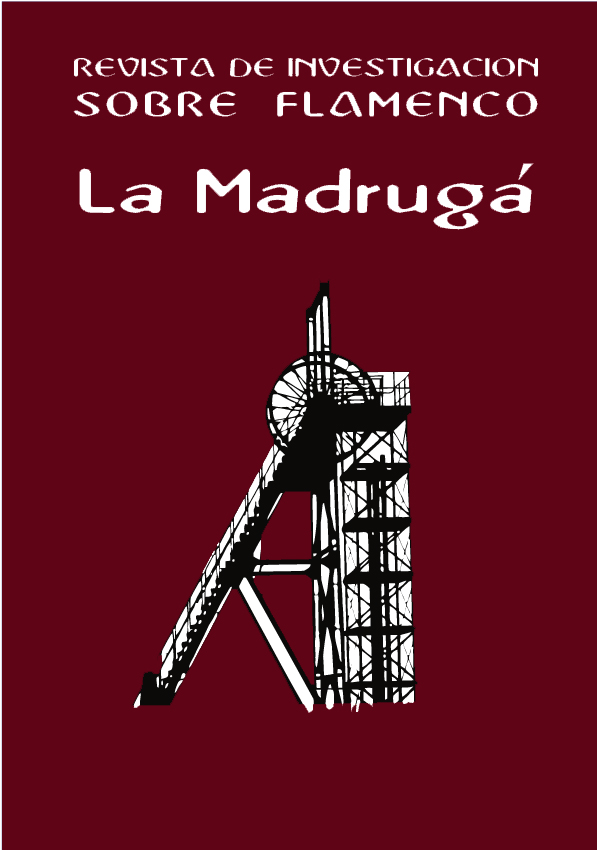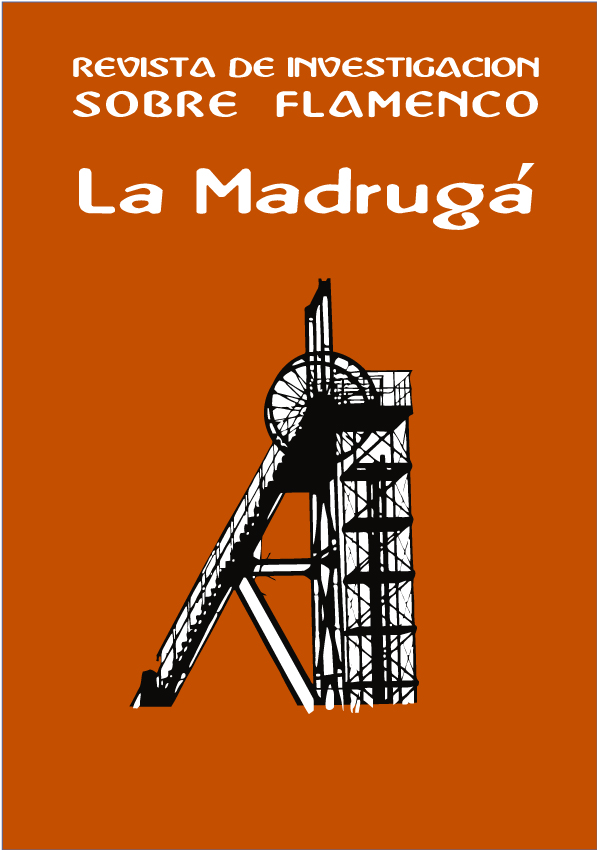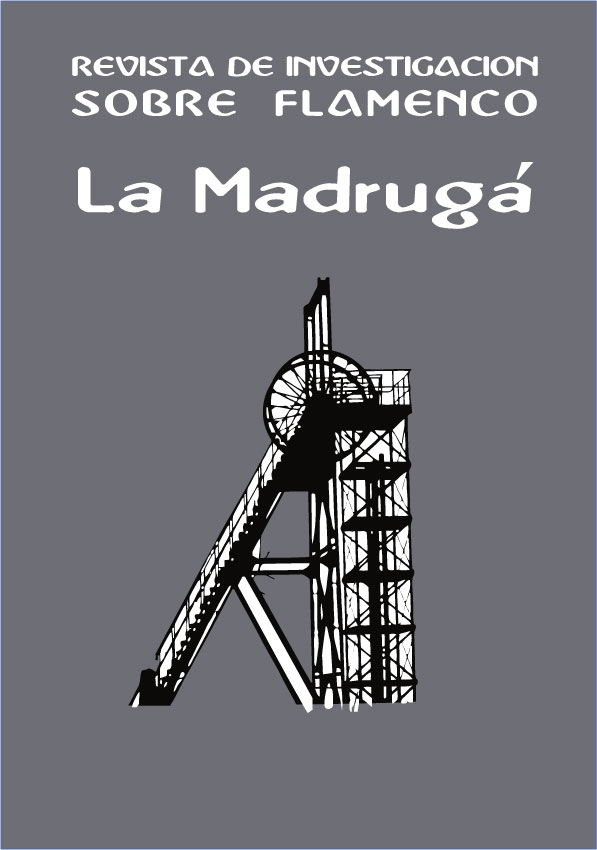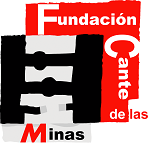Archives
-
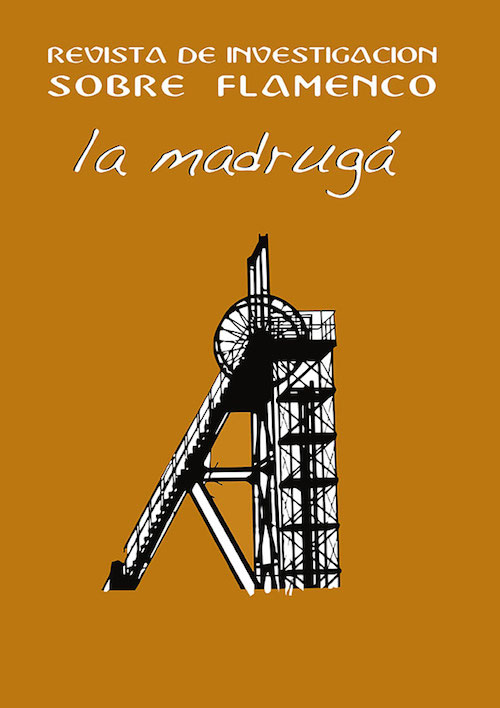
Junio
No. 10 (2014)The new number of "La Madrugá" brings with it five interesting papers. Fernando Cid analyzes the work of the Japanese poet Ishikawa Takuboku, his topics and motives that he puts in relation with those of the flamenco world. Pepe Sanchez, in a work in honoring Francisco Flores Arroyuelo, teacher of the University of Murcia, carries out a wide tour for the bibliography relative to the trovo and flamenco in Murcia. Pedro Fernandez Riquelme discovers the fruits of his investigations: three very little known flamenco singers of Cartagena (Murcia). On the other hand, Norberto Torres continues with the immense picture that he is composing about the precedents of the flamenco guitar, analyzing several testimonies of the first half of the 19th century. Finally, José F. Ortega speaks on the Lo Ferro's Festival (Torre Pacheco-Murcia) and his zeal for finding a cante (song) representatively: the ferreña. -
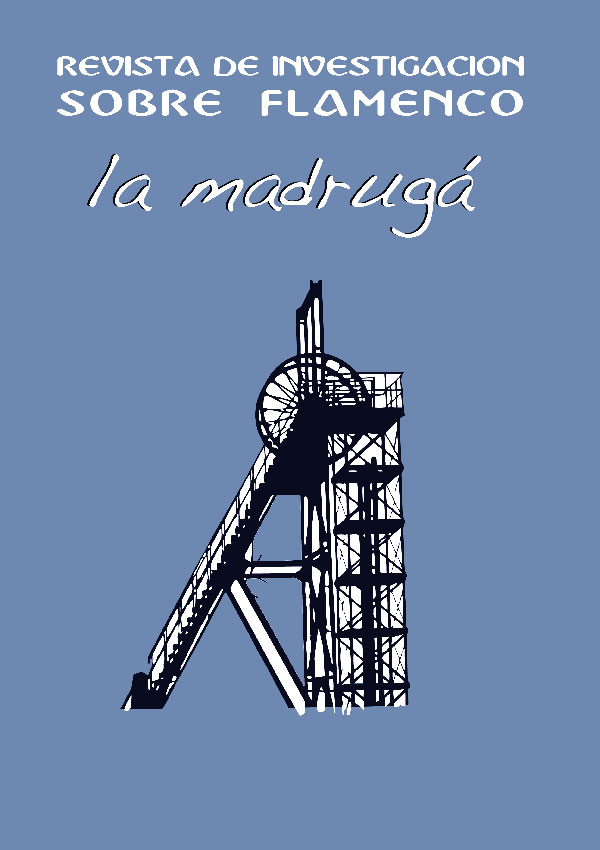
Diciembre
No. 9 (2013)The new number of La Madrugá contains a varied and interesting selection of articles. Norberto Torres analyzes different musical sources (works of Aguado, Sor, Carulli and Carcassi) that allow to detect points of connection between the classic-romantic guitar and the "pre-flamenco" guitar. Oscar González proposes an approximation to the contemporary mining industry from the perspective of the archaeology, using as source the musical heritage of the "cantes de las minas" (sing of the mines). Manuel Avellaneda recalls the first approximations of the saxophone to the flamenco music, who were the players and the technical resources they used. Ana Mª Alcaraz and Jose F. Ortega analyze the Flamenco Mass of Torregrosa and Fernandez de Latorre, one of the most known popular masses that arose immediately after the Second Vatican Council. Raquel Cantero brings us over to the Flamenco Festival of the Mines of Aldea Moret (Cáceres), a locality where the mining activity was decisive in his economic and social development. The last three works, realized by Curro Piñana, Antonio Parra and Jose F. Ortega, are a tribute to Antonio Piñana, patriarch of the "cantes de las minas", in the centenary of his birth. -
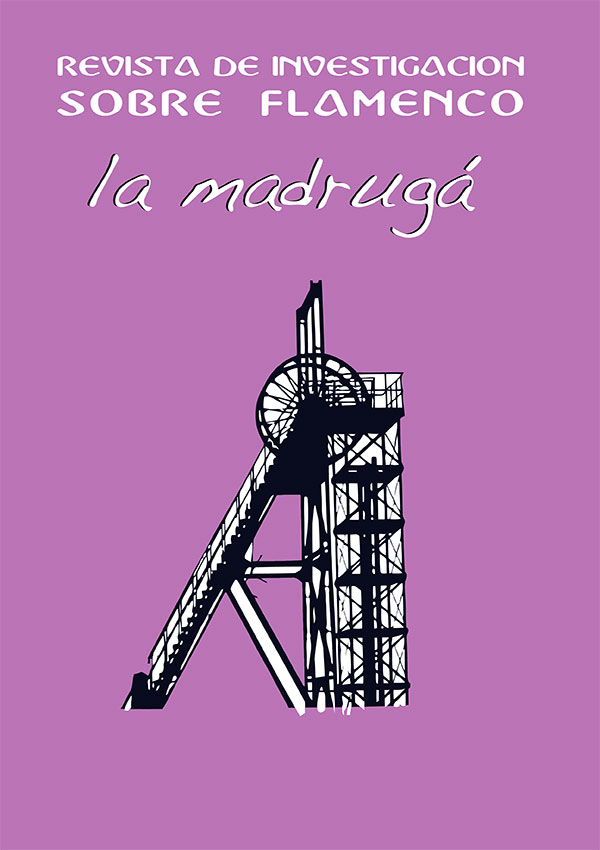
Junio
No. 8 (2013)The new number of "La Madrugá " contains six interesting articles.
Manuel Sánchez investigates on the folk masses from Murcia, between them, the "misas mineras" from La Unión.
Norberto Torres explores the musical origins of the flamenco guitar, with a research about the guitar of the 19th century, when the instrument reaches its definitive physiognomy.
Alfonso Carmona talks about flamenco poetry, analyzing its topics and typical strophes.
Estefanía Brao and Arturo Díaz, as well as Ana Moya and Montse Franco, think about how to improve the learning of the flamenco dancing.
Finally, Kiko Mora proposes an approximation to the first Spanish artist who managed to triumph in North America with his popular dances, Pepita Soto.
-
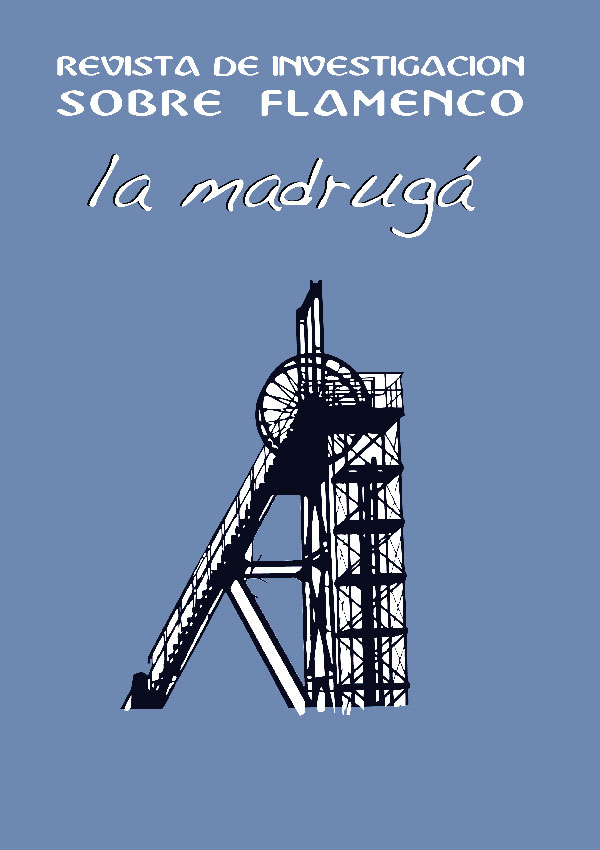
Diciembre
No. 7 (2012)The new number of La Madrugá brings with it a few most interesting and varied works on this art increasingly in strength that is the Flamenco.
The teacher and guitarist Carlos Piñana attacks an analysis of the accompaniment of the cantes de las minas (sing of de mines), opposing the traditional toque represented by his father Antonio Piñana, to his own offers replete with new sonorities.
Balbino Gutiérrez, one of the principal experts of Enrique Morente, realizes an approximation to the work of the brilliant from Granada flamenco singer, for whom the freedom and the creativity were always a stamp of his artistic personality.
The journalist, teacher and investigator Antonio Parra proposes an analysis of the flamenco dancing from the perspective of the theories of the communication and, particularly, of those born in the school of Palo Alto.
The guitarist, teacher and investigator Norberto Torres invites us to a historical tour across the principal figures of the toque native of Jerez de la Frontera, from mythical names as the maestro Patiño and Paco el Barbero up to Moraíto Chico.
Raquel Cantero, a young flamenco singer from Extremadura, brings us over to a type of popular saeta (arrow) that was in vogue up to the 19th century in Murcia, the "saeta de pasión".
Rubén Gutiérrez Mate offers us the fruits of his labor of investigation and emptying press to know to develop of the flamenco into Tetúan, in the Spanish Protectorate into Morocco.
Francisco Julio Giménez narrates his didactic experiences with the Flamenco and about the project "Flamencas" that has allowed to his pupils to know closely some of the women of major relevancy in this art.
Finally, Cristina Marinero realizes a meticulous analysis of the dance that Carmen Amaya led in Francisco Elías's mythical movie "Maria de la O".
-
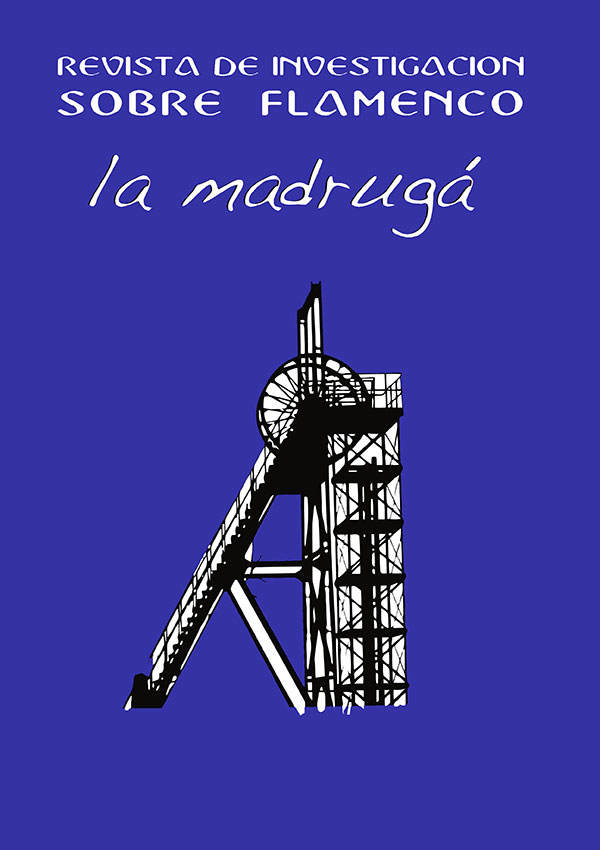
June
No. 6 (2012)The new number of "La Madrugá " contains five interesting articles. Norberto Torres explores the musical origins of the flamenco guitar in a trip that leads us to the Spanish baroque and in which appear some important figures as Briceño or Gaspar Sanz. Rafael Hoces thinks about the convenience of the musical transcription in an oral tradition art like the Flamenco. Montse Madridejos reveals new information on the brilliant bailaora Carmen Amaya and his cinematographic incursions during his stay in USA. Pedro Fernandez Riquelme investigates on presence of the Flamenco in the region of the northwest of Murcia, cradle of notable artists. And, finally, Jose F. Ortega describes the musical features of the "cantes de las minas", possibly the most important contribution of Murcia to the flamenco art. -
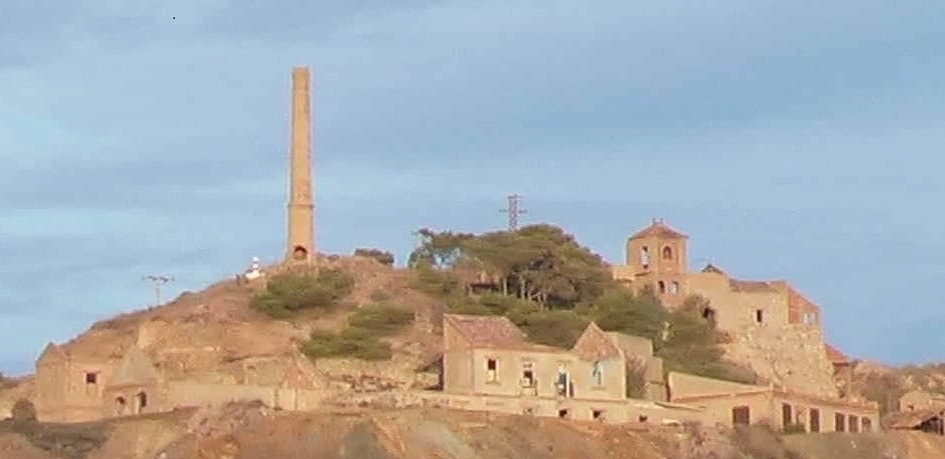
December
No. 5 (2011)The Journal Investigation on Flamenco "La Madrugá" new number offers us some of the works presented in the 2th International Flamenco Congress on Cantes Mineros (miner songs), celebrated in La Unión (Murcia-Spain) between the 21st and 23rd of July, 2011.
The first article is an interesting analysis of Enrique Morente's discography, where José Manuel Gamboa traces the typical sonority of songs “por tarantas” which the great maestro from Granada included in several flamenco styles as the seguiriya.
Génesis García talks to us about the spirit and subjects of the lyrics proceeding from two different worlds: the trovo (a kind of improvised poetry) and the flamenco.
Lola Fernández thinks about the phenomenon of the bimodalidad, perceived in the family of the fandangoes, and points at its possible origins.
José F. Ortega analyses the early tarantas, recorded in the beginning of the 20th century, which show a stage of transition between the world of the malagueña and the taranta. They will convert an independent style with the great “tarantera” bloom of the twenties.Soon, a specific “toque” will arise to accompany the “cantes mineros” with the guitar, the “toque por tarantas”, subject of two very interesting essays by Norberto Torres and Guillermo Castro respectively.
And finally, Ángela Perez Carrasco presents a summary of his research on the presence of the flamenco in Peñarroya-Pueblonuevo.
Let's hope that all of them satisfy the expectations of our readers, whom we encourage to inform with new works.
-
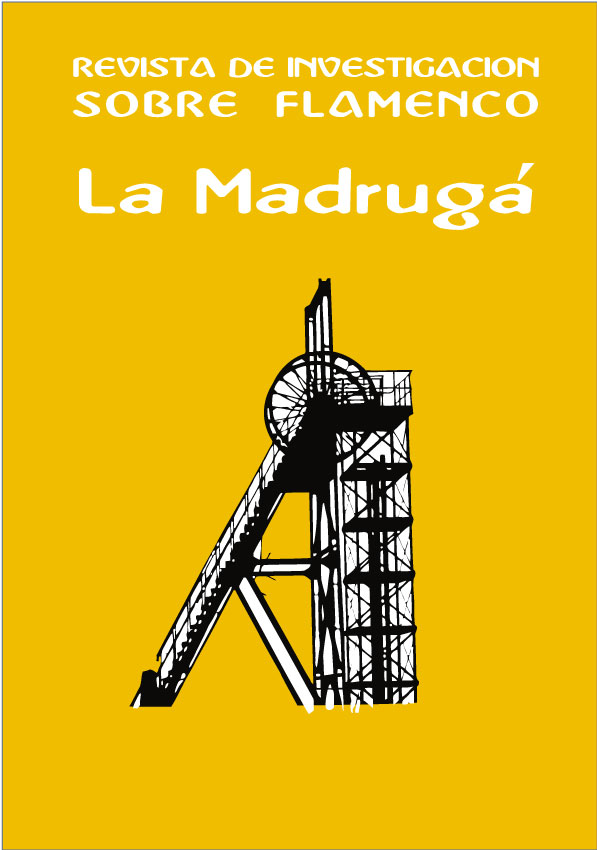
Diciembre
No. 3 (2010)The third issue of the Journal of Research Flamenco "La Madrugá " is exclusively dedicated to the teaching of flamenco, mainly understood in the context of general instruction but also with a foray into special education, conservatories of music and dance. So we have had with some of the leading and most experienced authors in this field. They offer us a reasonably comprehensive view of the current situation with recommendations on how to meet the challenge, the possibilities of this subject for students and teachers, and which difficulties must be faced. We hope this new issue attracts the interest of our readers and encourage them to delve into the exciting flamenco world. -

Junio
No. 2 (2010)The second edition of the Research Magazine on Flamenco "La Madrugá" is composed of a varied and most interesting selection of articles. Some are the result of an exhaustive study of press and other written sources, and bring to light facts that until now were unknown about flamenco and its most representative artists. Other articles move in the realm of musical analysis, without neglecting the history and songtexts, all with the purpose of outlining the characteristics which underlay the different flamenco styles, not only from the perspective of singing (cante) but also playing (toque). We are offered a chance of wandering through the pages of El Avisador Malagueño; we will learn some more about Trinidad Cuenca, about the importance of flamenco in Barcelona and by whom and when the taranto was danced on stage for the first time. Furthermore we will learn that already very early on the taranta was danced and that the first musical hints of this style can be found in works of cultured origins. The evolucion of the cante por cartageneras, of the flamenco guitar and of the songs without guitar accompaniment, are the subjects of the three concluding articles of this edition. We sincerely hope that all these articles will be of interest and will contribute to the expansion of the knowledge of this beautiful art. Finally we would like to thank the Fundación del Cante de las Minas for its support of our magazine in the capacity of patron: if we all travel in the same direction, the voyage becomes easier.
